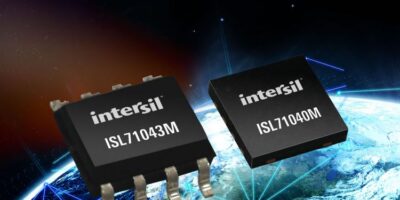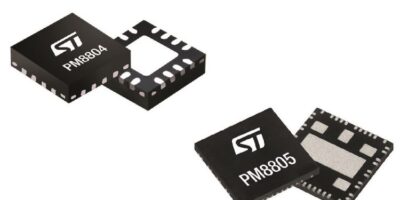For DC/DC power supplies in small satellites (smallsats) and launch vehicles, Renesas Electronics offers the ISL71043M and ISL71040M, believed to be the first plastic packaged, radiation-tolerant PWM controller and GaN FET driver for small satellite mega constellations in low earth orbit (LEO).
The ISL71043M single-ended current mode PWM controller and the ISL71040M is a low-side GaN FET driver for isolated flyback and half-bridge power stages, and motor control driver circuits in satellite buses and payloads. They meet the need of private ‘new space’ companies launching smallsats to form large constellations operating in multiple LEO planes. Smallsat mega-constellations provide global broadband internet links, as well as high-resolution earth observation imaging for sea, air, and land asset tracking.
The ISL71043M PWM controller provides fast signal propagation and output switching in a small 4.0 x 5.0mm SOIC plastic package, reducing PCB area up to three times compared to competing ceramic packages. The ISL71043’s 5.5mA max supply current reduces power loss by more than a factor of three. The adjustable operating frequency (up to 1 MHz) enables higher efficiency and the use of smaller passive filter components.
The ISL71043M and ISL71040M are characterisation-tested at a total ionising doze (TID) of up to 30krads(Si), and for single event effects (SEE) at a linear energy transfer (LET) of 43MeV•cm2/mg. Both devices operate over an extended temperature range of -55 to +125 degrees C.
The ISL71040M low-side GaN FET driver safely drives Renesas’ rad-hard GaN FETs in isolated topologies and boost type configurations. It operates with a supply voltage between 4.5 and 13.2V, a gate drive voltage (VDRV) of 4.5V, and it includes both inverting and non-inverting inputs. The device’s split outputs adjust the turn-on and turn-off speeds, and its high current source and sink capability enables high frequency operation. The ISL71040M ensures reliable operation when driving GaN FETs by precisely controlling the gate driver voltage to +three to five per cent over temperature and radiation. It also includes floating protection circuitry to eliminate unintentional switching.
The ISL71043M PWM controller and ISL71040M GaN FET driver can be combined with the ISL73024SEH 200V GaN FET or ISL73023SEH 100V GaN FET, and ISL71610M passive-input digital isolator to create a variety of power stage configurations.






